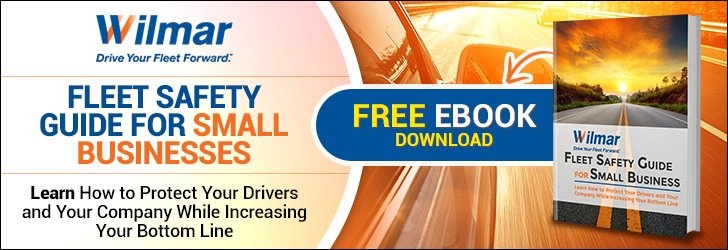In 2021, there were over 500,000 accidents involving large trucks. Among them, only 1 out of 5 accidents involved injuries, and less than 1 out of 100 accidents resulted in fatalities. In these statistics, we can also see other trends. Much of the reduction in both accidents and harm caused by them can be attributed to fleet safety technology. As ever-more trucks are manufactured or refitted with high-tech safety features, the risk of truck accidents continues to drop and the damage they cause can be statistically reduced with each accident.
Safety technology has come a long way in the last decade, and fleet managers have a great deal to gain by building a fleet with the latest in accident prevention tech. Only through a concerted effort can we pave the way to the goal of zero collisions in the logistics industry.
Let's take a closer look at the technology that is transforming road safety and the impact it can have.
Side and Rear Cameras Eilimate Blindspots
One of the biggest contributors to accidents involving large trucks are the significant blind spots created by the long trailer body and lack of rear-view perspective. Even with a fish-eye mirror, drivers often cannot make out other cars positioned alongside or behind the truck.
All that changes with the installation of side and rear cameras constantly displayed on a central screen. Just like back-up cameras on a personal vehicle, side and rear cameras on a truck can finally eliminate those dangerous blindspots and give drivers the perspective they need for truly aware and careful driving.
Close Following Alerts Prevent Rear-Ends
Close follow alerts at the rear and front of the vehicle help trucks to know when another vehicle is too close. Someone following too close is at risk of rear-ending the truck, and those who cut-off trucks are at risk of being rear-ended by the slow braking speed.
These alerts can help trucks adapt and slowly hit the brakes before a collision occurs - even if it would be the other vehicle's fault for getting too close.
Lane Departure Alerts Counteract Drifting
Driver fatigue is a problem that plagues the industry, especially for long-haul truckers who have to drive through twilight hours in which visibility and mental acuity are difficult to maintain. However, a computer inside the vehicle is not affected by twilight or long hours.
Lane departure alerts and even lane position maintenance features can help trucks avoid the extremely high risk of lane drifting and the accidents this can cause.
Adaptive Cruise Control Prevents Collisions
Cruise control is a blessing and a curse for truck drivers, until now. Backed with radar distance detection, adaptive cruise control begins to slow the truck as it approaches the back of another vehicle. This can ensure that cruise control and fatigue combined do not result in an avoidable accident. It can also help truckers adapt to a sudden slow-down in traffic.
Velocity Telematics Alert on Unsafe Speeds and Turns
While it's risky to hard-lock a truck's top speed, telematics can help drivers (and fleet managers) identify and respond to unsafe driving speeds and turning rates. Telematics can detect a truck's speed, direction, and change in direction to determine whether the truck is moving or turning too fast.
Maintenance Telematics Reduce Overlooked Risks
Telematics that read from the car's internal computer can also help to detect or predict maintenance problems before they become an emergency. Telematic maintenance data can help to reduce the risk of overlooked wear-and-tear or damage to essential elements of your fleet vehicles so that repairs are conducted early.
The Future of Zero-Collision Safety and Fleet Technology
Just with the technology that already exists, your fleet can significantly reduce the risk accidents and together, we can work toward a zero-collision future. Keep your eye out for the next generation of safety technology and equip your fleet with the latest upfit options with fleet management services like Wilmar Inc.









